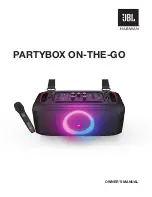
4.1
Summary
If the equipment doesn’t work normally, stop using it at once and check for any
signs of trouble. Have the unit inspected by a qualified professional.
Do not allow untrained personnel to check, clean or repair the unit.
Only use replacement parts that have been approved by the manufacturer.
Make sure the main power switch has been disabled, or remove the fuse,
before attempting any type of maintenance on the unit.
4.2
Cleaning
• Remove the unit shell and side panels. Use clean and dry low-pressure air to blow dust and dirt from the
air
alleyway and inner parts. Thoroughly clean any dirt and grime on the head of the
welding tongs.
• Keep the air alleyway clear and clean in order to provide adequate air circulation for proper cooling.
• After cleaning with low-pressure air, inspect the unit for any loose hardware. Repair or tighten any loose
components, including all electrical contacts. Check for frayed cable insulation, and replace
as necessary.
If a cable is improperly replaced, the bare cable may make contact with the
grounding object – the resulting arc can hurt or eyes or cause a fire.
Body contact with cable link or lead may result in severe burns or death.
4.3
Checking and maintenance
Keep the power dry. Remove any grease and make sure the power can’t be damaged by flaming metal and
sparks.
4.3.1 Fan
Keep blower fan clear of dust and grime buildup.
4.3.2 Transformer
The transformer generally needs no maintenance – simply blow off any dust and dirt with
low-pressure air.
4.3.3 Replacing the wire wheel.
See chapter 2.3.4 for replacement instructions.
4.3.4 Cable
Store cable in a clean, dry place.
Chapter 4 - Maintenance
Page 13
CAUTION
WARNING
WARNING















































